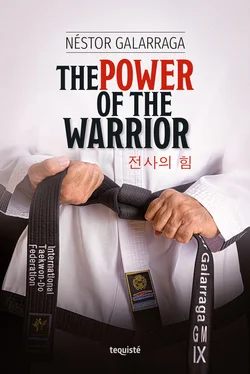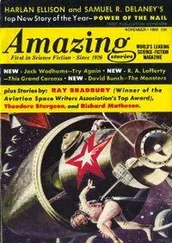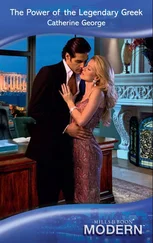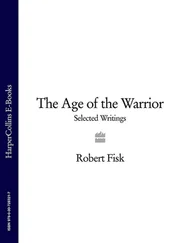I am not interested in developing any further this historical feature of the discipline but, in its logic, I cannot ignore the most outstanding aspects of its transformation…
At first, the discipline was developed to be used by the army to defend its country. This is the fundamental reason it is recognized worldwide as a martial art. But, as time went by and the discipline became connected to several political events, mainly the confrontation between General Choi and the government of South Korea, it became a sport discipline without precedents, to the point that there are two sports sharing the same origin and the same name that have fought throughout history for the right to be called the original Korean Martial Art, for the technique, for the entering into the Olympic movement, and for its worldwide popularity.
From the beginning, ITF Taekwon-Do distinguished itself from the rest of the martial arts; it steered into a new direction, mainly the way to move the body and to get power, although at first it was a concept detached from the real practice. It is obvious that it was inspired from Karate; not only did it copy the basic concept of the technique, but also its first texts and bibliographies. What Choi tried at first was to make a superior Karate. But the idea to start using leg techniques inspired in Taekkyon, with the same ability as the fists, and to incorporate a variety of turning techniques and different jumping kicks separated Taekwon-Do from Karate. Simultaneously, from the beginning, students had to memorize the power theory, some scientific formulas and to know precisely what they were achieving with each movement, regarding its argument and application (this gave the discipline some scientific support). They became passionate with discipline and turned into soldiers and intellectuals (definition given by the founding father), true martial artists and, later on, elite athletes.
After meticulously analyzing its history, I can say, without the fear of being mistaken, that de current development of Taekwon-Do was possible due to a series of casual events, a real multicolor salad of coincidences. The sway of Japan over Korea, the great number of social incidents, the dispute over power and the different political stances triggered an unprecedented artistic and martial discipline with a highly esthetic content, a popular sport, a scientific-based technique and a guiding thread recognized by thousands of people worldwide as their lifestyle. The current standing of the discipline is a true coincidence, though I do not quite believe in coincidences.
I believe it is important to highlight the fact that there are two sports sharing the same origin and the same name. However, comparing them today would be like comparing basketball to volleyball. Between 1945 and 1955, as I explained in the introduction to this book, a Korean called Choi Hong Hi developed a new martial art for Korea and named it Taekwon-Do. The country was under the presidency of Syngman Rhee, a politician, leader of the Korean national movement and first president of South Korea since 1948 and until 1960. On April 11 of 1955, at approximately 8:40 pm, Taekwon-Do was accepted as the new Korean Martial Art. The growth and popularity earned in a short period of time resulted in a meeting on September 11 of 1961 where all the Masters and most important Korean martial arts schools reluctantly gathered to form the Korean Taekwon-Do Association and, obviously, General Choi was elected president. He immediately began to work to internationalize his project, while the rest of the Korean masters were conspiring to get the presidency of the KTA.
On March 22 of 1966, General Choi Hong Hi established the International Federation of Taekwon-Do ITF, based in South Korea, and he —who at the time was an Army General— was elected as president. It is important to highlight, at this point, the enormous persistence and tenacity of General Choi, who at that moment was supported by Nam Tae Hi, with whom he had created the Oh Do Kwan or “school of my way”. Nam cooperated in the formation process of the discipline as chief instructor, but it is important not to be misled: Taekwon-Do had only one ideologist and founding father, who fought for a name and the idea that Korea needed its authentic martial art against all schools and martial arts exponents who, at that time, wanted to continue with their old Karate schools and who disagreed and differed with the new project. Chung Do Kwan (blue wave school), created by Lee Wong Guk; Soong Moo Kwan (pine tree taekwondo), created by Ro Byung Jik; Yoon Moo Kwan and Ji Do Kwan (institute for wisdom’s way), created by Chu Sang Up and Yung Kwe Byong; YMCA Kwon Bop Bu and Chang Moo Kwa (school of martial development), created by Yoong Byung In; and Moo Duk Kwan (school of martial virtue), created by Hwang Kee had all a common denominator: they wanted to remain under the name Tang Soo Do (“karate” in Chinese), because mostly all of these men had been martially educated in Japan or trained in Korea by Japanese masters, and they wanted nothing to do with changing the technique or using a new name.
All of this happened during the foundation period but, sometime afterwards, General Choi fiercely confronted the Korean government for the positioning of Taekwon-Do worldwide. The General had some attributes that became fundamental at the time of carrying out his endeavors: martial and military training, courage, intuition and the peculiar capacity to stop at nothing. Thus, it is important to understand that everybody else came with. History showed, later on, that the others, self-proclaimed cofounders or mistakenly called “pioneers”, in many cases, had not even one light-bulb moment. Nevertheless, it is important to explain that there were two instructors that were essential in the whole creation and formation process: Nam Tae Hi, in the military development of the martial art, and Jong Chan Kim, in the civilian, institutional and sporting development of the discipline.
General Choi was tremendously resisted by the masters of the different Korean martial arts schools during the whole founding process and, later on, by the government trying to challenge the control that the General had over the organization and, then, by trying to erase him from history (in fact, there were two murder attempts against General Choi). I understand this had to do with two key issues rooted in the nature of the Korean people: firstly, the natural division of Korea, in every sense, as part of their cultural background; let us not forget the story of the three kingdoms and the never-ending wars for power; this is like a brand mark in the hearts of the Korean people. In fact, they are still divided today by parallel 38º, “north to south”, a crack that has not yet been filled; and, secondly, very important indeed, in Korea, the different martial arts styles of the time called Kuanes were Karate, Judo, Kendo schools, or even a mixture of all, in some cases. In fact, Tang Soo Do means “karate” in Chinese and it was the denomination under which they wanted to group themselves. It is obvious that all those styles had the Korean stamp on them, but the Japanese influence at that time was absolute. The radical change regarding the direction of martial arts started with Choi Hong Hi´s proposal for the creation of an authentic Korean martial art and this was what clearly laid down the rules.
Let us not forget that, between 1910 and 1945, the Japanese occupation of Korea was part of the expansion policy of the Empire of the Sun. Korea was under the rule of Japan for 35 years —from August 22 of 1910 to August 15 of 1945— during almost all the first half of the 20th Century until the Japanese surrender in World War II. The Japanese invasion was brutal; not only did they force the Korean into slavery and poverty but they also tried to snatch their identity away. Japan implemented a subjugation policy forcing Koreans to assimilate Japanese culture. At Korean schools, Japanese language was spoken; Korean written newspapers were shut down and history was distorted for Koreans to be seen as an inferior class. Martial arts were forbidden but certain members of some selected families were allowed to practice Judo or Karate. Furthermore, better off families would send their children to Japan to get educated and they would return to Korea culturally indoctrinated and ready to defend the empire, and the rest would grow old working as slaves and deprived of any kind of cultural education. It was perverse. By going over this part of history, I understood that, in the process of the creation of Taekwon-Do, the division resulting from the power struggles as an intangible part of the history of Korea and the influence that Japanese culture still exercised over the Korean people, even after so many years had gone by, as well as the lack of institutionalism, something quite common at that time, were all deeply rooted in the very culture or nature of the Korean people and strongly influenced the struggles to position and control the new Korean Martial Art which, at that time, was part of an integral plan to change the image that the world had of the Korean government.
Читать дальше












